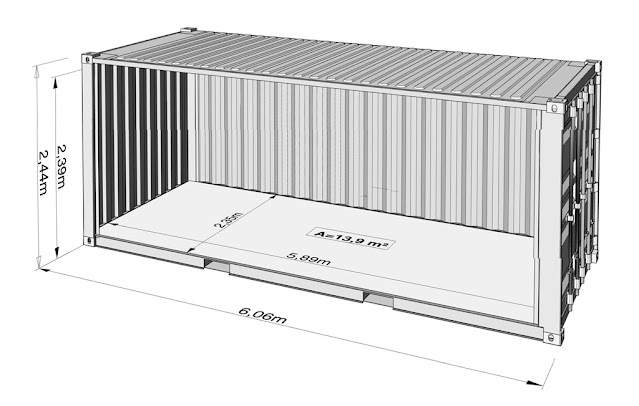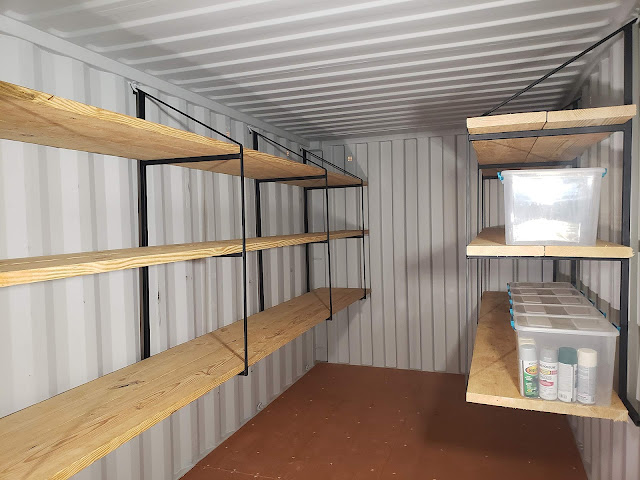Shipping Container Size: A World of Possibilities in Standardized Boxes
 |
In today's globalized world, the shipping industry plays a critical role in moving goods across continents efficiently and cost-effectively. At the heart of this industry are shipping containers, standardized boxes that have revolutionized international trade. These sturdy metal boxes have transformed logistics, making cargo transportation safer, faster, and more convenient. In this blog, Shipping Container Size we delve into the fascinating world of shipping container sizes, exploring their dimensions, types, and the impact they have had on the global economy.
Must Read: Navigating Container Shipping Rates in the USA: Complete Guide
The Birth of Standardized Shipping Containers
Before standardized shipping containers, the cargo was loaded individually onto ships, leading to significant inefficiencies, labor-intensive handling, and increased risk of damage and theft. In 1956, American entrepreneur Malcolm McLean revolutionized the transportation industry by introducing the first standardized shipping container, measuring 8 feet wide, 8.5 feet high, and either 20 or 40 feet. This standardized design, known as the International Organization for Standardization (ISO) container, Shipping Container Size allowed for seamless intermodal transportation, enabling goods to be transported via ships, trucks, and trains with no unloading and reloading.
Common Shipping Container Sizes
Over time, the demand for shipping containers grew, leading to the development of various sizes to accommodate different cargo. The most commonly used shipping container sizes are:
- 20-foot container: This container, measuring 20 feet, 8 feet in width, and 8.5 feet in height, is known as the Twenty-Foot Equivalent Unit (TEU). Someone widely used it for transporting a variety of goods, from consumer electronics to clothing.
- 40-foot container: Similar in width and height to the 20-foot container, the 40-foot container provides double the length, offering more space for bulkier or larger shipments.
- High Cube containers: These containers have the same dimensions as the standard 20-foot and 40-foot containers but boast an extra foot in height, measuring 9.5 feet tall. High Cube containers are ideal for goods that require additional vertical space, such as automobiles or machinery.
- 45-foot container: This container size is gaining popularity as it offers more cargo space than a 40-foot container. I commonly used it for transporting lightweight, voluminous goods.
- Reefer containers: Refrigerated containers, or "reefers," are used to transport perishable goods, such as fruits, vegetables, and pharmaceuticals, under temperature-controlled conditions. They are available in various sizes, including 20-foot and 40-foot options.
Impact on Global Trade
The standardization of shipping containers has had a profound impact on global trade and the world economy. Some of the key benefits include:
- Improved Efficiency: The use of standardized containers has streamlined loading and unloading processes, reducing cargo handling time and speeding up logistics operations.
- Lower Costs: Containerization has significantly lowered transportation costs as it allows for better utilization of cargo space, reduces labor requirements, and minimizes the risk of pilferage and damage.
- Intermodal Versatility: Standardized containers can seamlessly shift between different modes of transportation, ensuring smoother transfers from ships to trucks or trains, reducing delays, and enhancing the overall supply chain.
- Globalization Facilitation: The ease of containerized transportation has fostered the growth of global trade, enabling businesses to access international markets and consumers to enjoy a wider range of products.
- Infrastructure Development: The standardization of container sizes has driven the development of specialized port facilities, container yards, and intermodal transportation systems, enhancing overall infrastructure worldwide.
Must Read: Smart Shipping Containers: The Future of the Shipping Industry
Conclusion
Shipping container size may seem like a mundane aspect of global trade, but it has played a pivotal role in shaping the modern world economy. These standardized metal boxes have brought unparalleled efficiency, cost-effectiveness, and security to cargo transportation, revolutionizing the way goods move across the globe. As trade continues to expand and industries evolve, the adaptability and versatility of shipping containers will remain a cornerstone of the logistics industry, ensuring goods continue to reach their destinations in a safe, timely, and efficient manner.
Must Read: Why Choose shipping container bar is Best for Us: 10 Reasons



Comments
Post a Comment